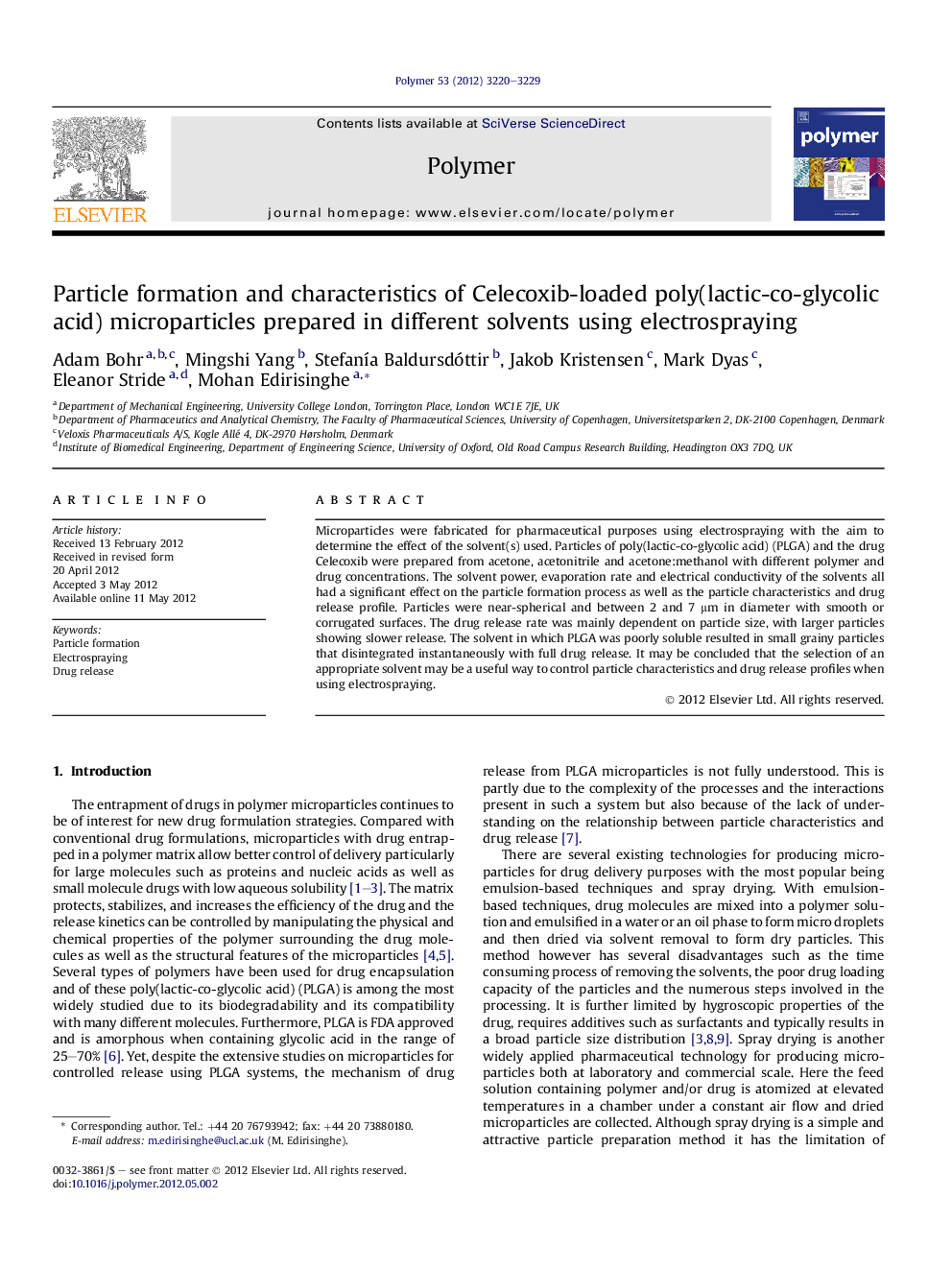| Article ID | Journal | Published Year | Pages | File Type |
|---|---|---|---|---|
| 5183309 | Polymer | 2012 | 10 Pages |
Microparticles were fabricated for pharmaceutical purposes using electrospraying with the aim to determine the effect of the solvent(s) used. Particles of poly(lactic-co-glycolic acid) (PLGA) and the drug Celecoxib were prepared from acetone, acetonitrile and acetone:methanol with different polymer and drug concentrations. The solvent power, evaporation rate and electrical conductivity of the solvents all had a significant effect on the particle formation process as well as the particle characteristics and drug release profile. Particles were near-spherical and between 2 and 7 μm in diameter with smooth or corrugated surfaces. The drug release rate was mainly dependent on particle size, with larger particles showing slower release. The solvent in which PLGA was poorly soluble resulted in small grainy particles that disintegrated instantaneously with full drug release. It may be concluded that the selection of an appropriate solvent may be a useful way to control particle characteristics and drug release profiles when using electrospraying.
Graphical abstractDownload full-size image
